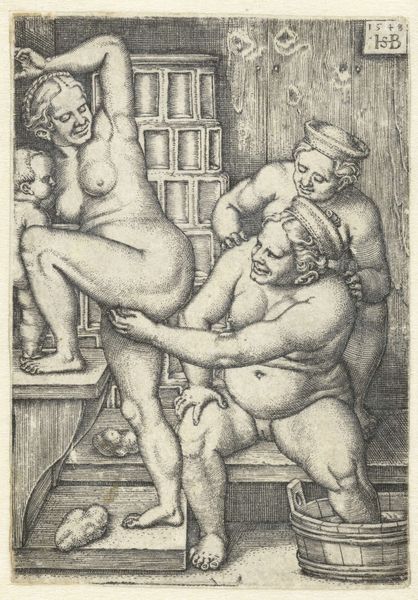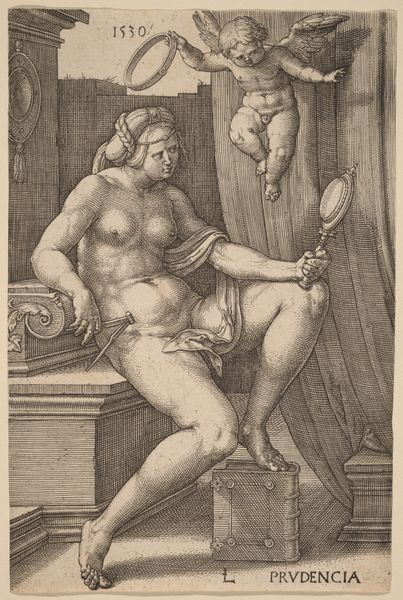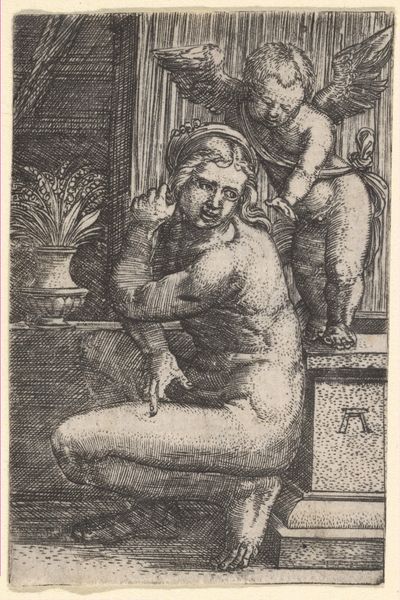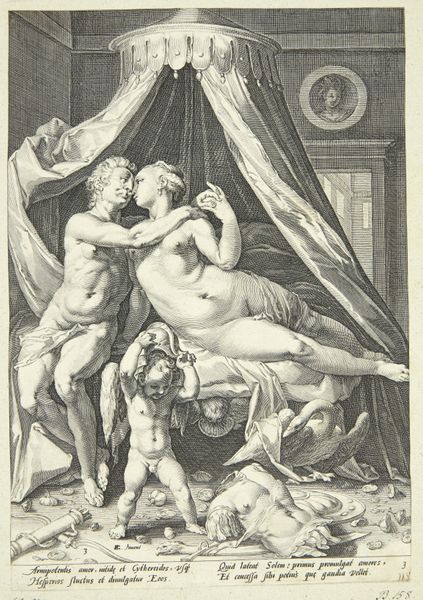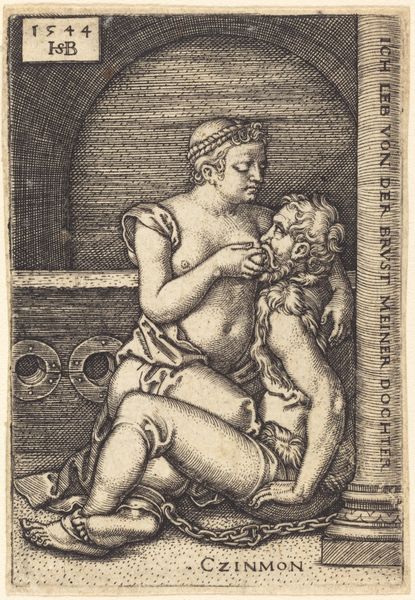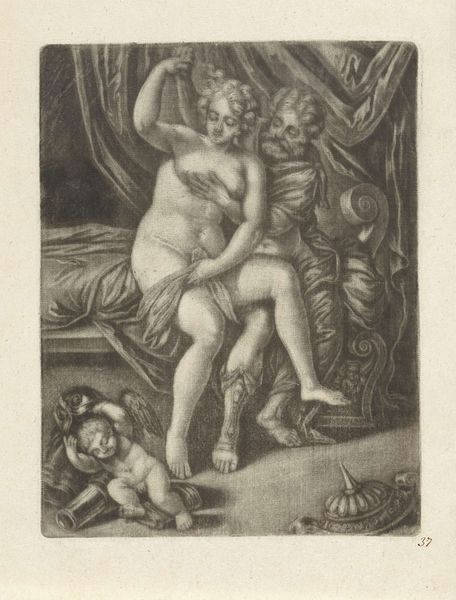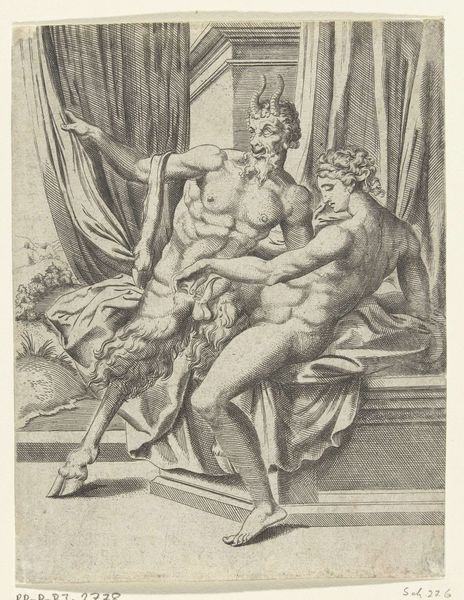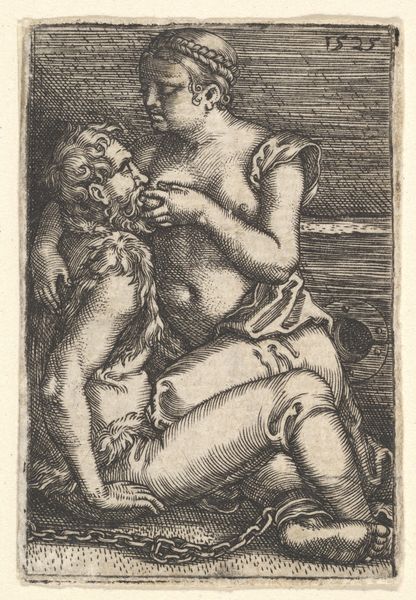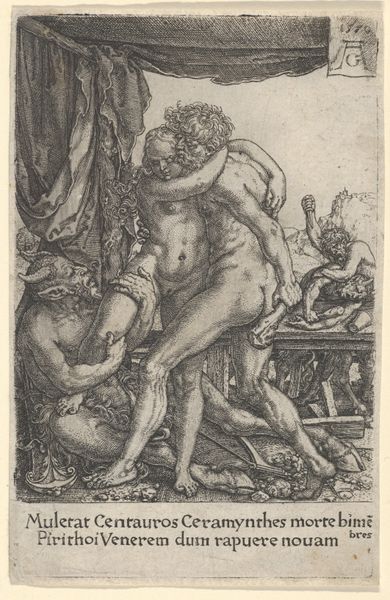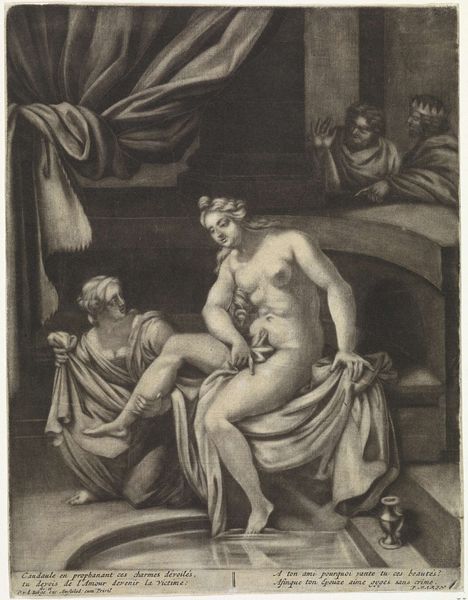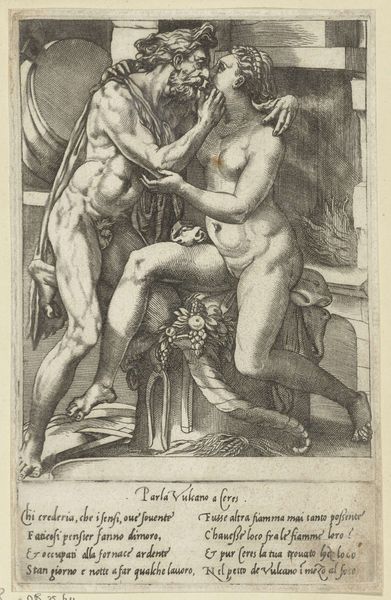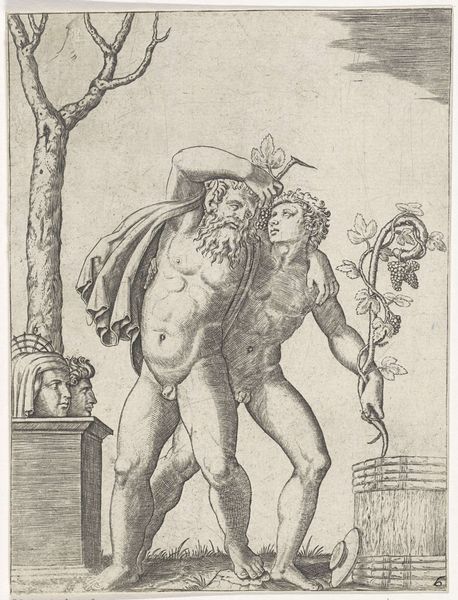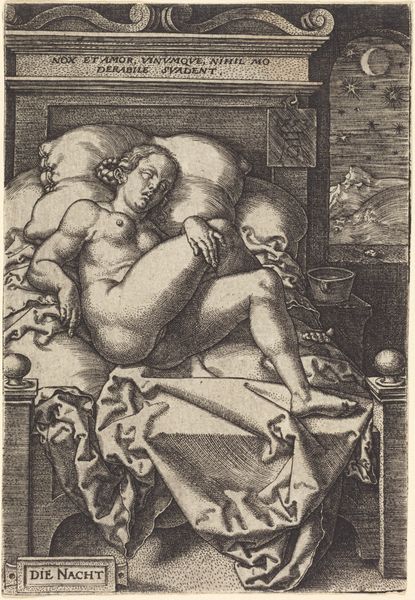
engraving
#
figuration
#
11_renaissance
#
genre-painting
#
history-painting
#
northern-renaissance
#
nude
#
engraving
Dimensions: height 115 mm, width 76 mm
Copyright: Rijks Museum: Open Domain
Editor: Here we have Georg Pencz’s "Abraham and Hagar Spied Upon by Sarah," created sometime between 1546 and 1550. It’s an engraving. I find it kind of…tense. The figures are so close, but then you see Sarah peering in. What draws your eye when you look at this? Curator: For me, it’s the engraving itself. Think about the labor involved in creating these lines, each one a deliberate act of production. And the social context: engravings like this were often reproduced and disseminated widely. This brings questions of accessibility and consumption into play, doesn't it? Who was buying this? Editor: So, you’re thinking about the market for it? Like, how this object would have circulated? Curator: Precisely. Consider the contrast: a biblical scene depicting intimate relations made available as a reproducible commodity. This undermines any easy division between sacred “high art” and the marketplace. Is this devotional, decorative, or…something else entirely? What’s *being* consumed here, besides the image itself? Editor: That’s fascinating. It’s almost like the act of looking—Sarah spying, us looking at the engraving—becomes part of the consumption process. Curator: Exactly! And how does that relate to gender roles and social power at the time? Sarah, confined and observing, versus Abraham, participating in a…let's call it a different kind of production. Consider the symbolism imbued by objects that frame the central figures of Abraham and Hagar: an elevated footstool and what appear to be delectable refreshments imply status and prosperity. Does that framing influence your read of the composition? Editor: Definitely. I hadn't really thought about the relationship between the print's accessibility and the scene it depicts, and the power relations. Curator: Right, it challenges any clear distinctions. This image shows us how art is embedded in complex social relations and economic practices, right down to the act of looking. Editor: I see that now. I came in thinking about the figures themselves, but I am leaving pondering the labour.
Comments
No comments
Be the first to comment and join the conversation on the ultimate creative platform.
